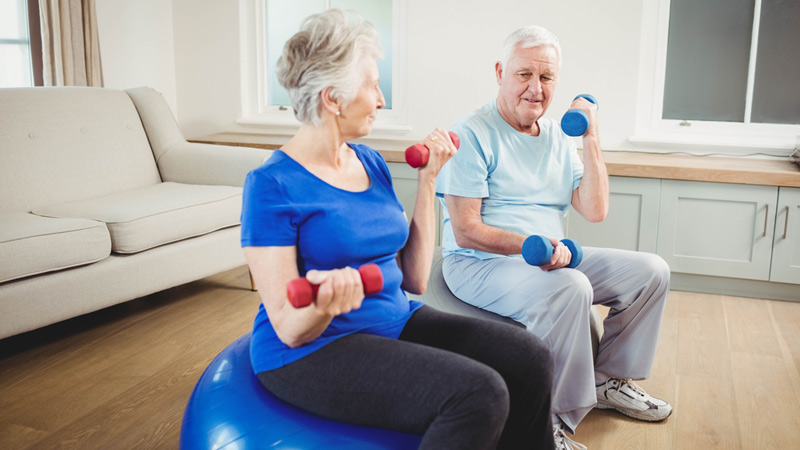DIY Exercise Program
If exercising at a gym or studio doesn't fit into your schedule or budget, create your own exercise routine. Consider getting help from a personal trainer so you can design a fitness plan that suits your abilities and needs.

If exercising at a gym or studio doesn’t fit into your schedule or budget, create your own exercise routine. Consider getting help from a personal trainer so you can design a fitness plan that suits your abilities and needs. The cost of a personal trainer varies depending on where you live, but the average is about $60 to $70 for a one-hour session.
Consulting a trainer is particularly helpful when it comes to strength training, something many older people skip because it’s hard and, well, kind of boring. But muscle strengthening and endurance training may be the most important elements of a fitness program for older adults because they prevent the loss of muscle mass and the physical weakness that often accompany aging, according to the American College of Sports Medicine. And research by the Cleveland Clinic shows that half of women and one-fourth of men over age 50 will have an osteoporosis-related fracture during their lifetime. Strength-training exercises can prevent bone loss and even stimulate bone growth, reducing the risk of osteoporosis-related injuries.
You don’t need to be a bodybuilder to strengthen your muscles and bones. Resistance training takes many forms. Ryan Fritz, a personal trainer at Science of Cardio, a fitness studio in Washington, D.C., is a proponent of isometric exercises, which involve contracting a muscle or group of muscles without moving the affected joint. The plank position, often included in yoga and Pilates workouts, is an example of isometrics. For seniors in particular, “it’s a very safe way to exercise,” Fritz says.
You can also improve bone density and muscle strength by working out with free weights, stability balls or blocks. Some yoga positions, including the Tree, Triangle and Warrior II poses, have been shown to increase bone density, according to a study by the Columbia University College of Physicians and Surgeons.
Strength training doesn’t require an enormous time commitment. Aim for half an hour twice a week; if you can fit in three half-hour workouts, that’s even better. Although you can do strength training at home, a few sessions with an experienced trainer can go a long way toward developing good form, which will help you avoid injuries. A good trainer can also help you come up with a whole-body workout “so you’re not just standing in front of a mirror doing bicep curls,” says Dianne Bailey, a certified sports conditioning specialist in Denver. The American College of Sports Medicine recommends a twice-a-week workout that trains each of the six main muscle groups: legs, abdominals, back, chest, shoulders and arms.
Sandra Block is a senior associate editor at Kiplinger’s Personal Finance magazine. Send your questions and comments to moneypower@kiplinger.com. And for more on this and similar money topics, visit Kiplinger.com.
(c) 2016 Kiplinger’s Personal Finance; Distributed by Tribune Content Agency, LLC.


